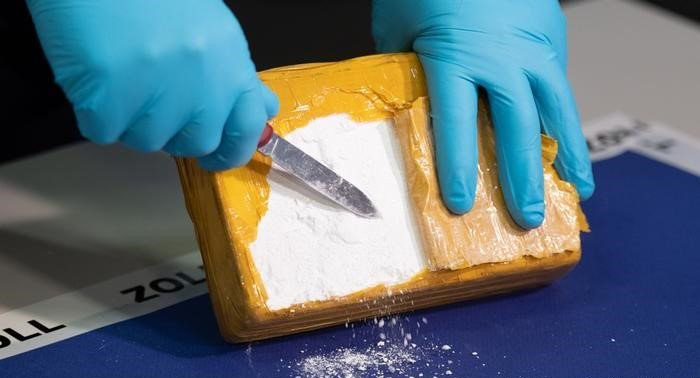The Customs Anti-Narcotic Unit (CANU) and other authorities here have begun an investigation in relation to a huge cocaine find in Germany in a container of rice from Guyana.
Authorities in Hamburg are probing the discovery of 1.5 tons of cocaine, which was found concealed between sacks of rice that entered the country in a cargo ship container from Guyana.
According to a Deutsche Welle report yesterday, the seizure was made after investigators at the Joint Customs and Police Investigation Group (JIT) reportedly received a tip-off about drug smuggling.
The cocaine which has an estimated street value of around €300 million (US$353 million) was hidden between sacks of rice in the container which came from Guyana, the Hamburger Abendblatt newspaper said.
It is one of the largest quantities ever seized in the northern German port city, a spokesperson of the Customs Investigations Office said. “The 1.5 tons of cocaine seized may be a highly pure drug, which would be tripled in price for street sales,” the Hamburger Abendblatt quoted an official as saying.
The container had arrived in Hamburg’s port at the end of June on the 300-meter-long container ship, “CMA CGM Jean Gabriel.”
The container, according to the report was to be loaded onto a feeder ship together with eleven other transport containers and then ultimately transported to Poland. As a result, it was temporarily stored at the Hamburg terminal.
“The container in question was then taken to the city’s Waltershof customs office and examined in a testing facility. Officers found 47 large packages hidden between the rice sacks and within those packages, a total of 1,277 small parcels with cocaine,” the report said.
Local authorities including CANU and the Guyana Police Force are also said to be investigating the discovery.
Contacted yesterday, CANU Head, Major General (Ret’d.) Michael Atherly told Stabroek News that the agency is aware of the matter and an investigation is ongoing. He declined to divulge any other information at this time.
“We know about this matter and we are investigating. I won’t want to make comments other than that but we know about it and we are working on it that’s as far as I would go for now,” Atherly said.
A police source explained that officials will now have to work towards determining some vital information which includes who the shipment belongs to and how it even managed to leave the country.
Minister of Agriculture Zulfikar Mustapha yesterday said that he has since requested a “detailed” report from the Guyana Rice Development Board.
“I have asked the manager of GRDB to provide me with a detailed report so that I can brief the President…. I am very concerned….those things will affect our exports and we will have to put measures in place to avoid future reoccurrence of those things but it’s very, very serious,” Mustapha told a virtual press conference yesterday.
He said that the discovery can affect the country’s exports and measures will have to be implemented in order to avoid any future recurrence.
Asked what he is looking for in the report, Mustapha said there are a number of issues that have to be examined.
“Who are the shippers? When it was shipped? When it left Guyana? How it went out of Guyana, the carrier and things like that. Those are some of the information we need and I hope the GM will provide those information so that I can brief the relevant authority,” he noted.
The Deutsche Welle report said all of the parcels had various symbols on them including a cat’s face, the Gallic rooster, and the Ampelmännchen (red and green traffic light symbols shown on pedestrian signals in Germany). Several hundred of the packages were marked with the same logo.
According to the report, authorities presumed the cocaine was to be distributed from Poland to bulk buyers throughout Europe, who would then sell the drugs to sellers.
“Officials warn the global drug trade continues to thrive despite temporary border closures during the coronavirus pandemic,” Deutsche Welle said.






